Paintless Dent Repair (PDR) is a technique used to remove minor dents and dings from a vehicle without repairing or replacing the original paint. This technique is often used for hail damage repair, although it can also be used for other small dents and dings. PDR is an excellent option. Continue reading to discover 5 paintless dent repair techniques for hail damage. Learn how to restore your car’s look without damaging the paint. (153 characters)
You can find more information about our paintless dent auto repair service here.
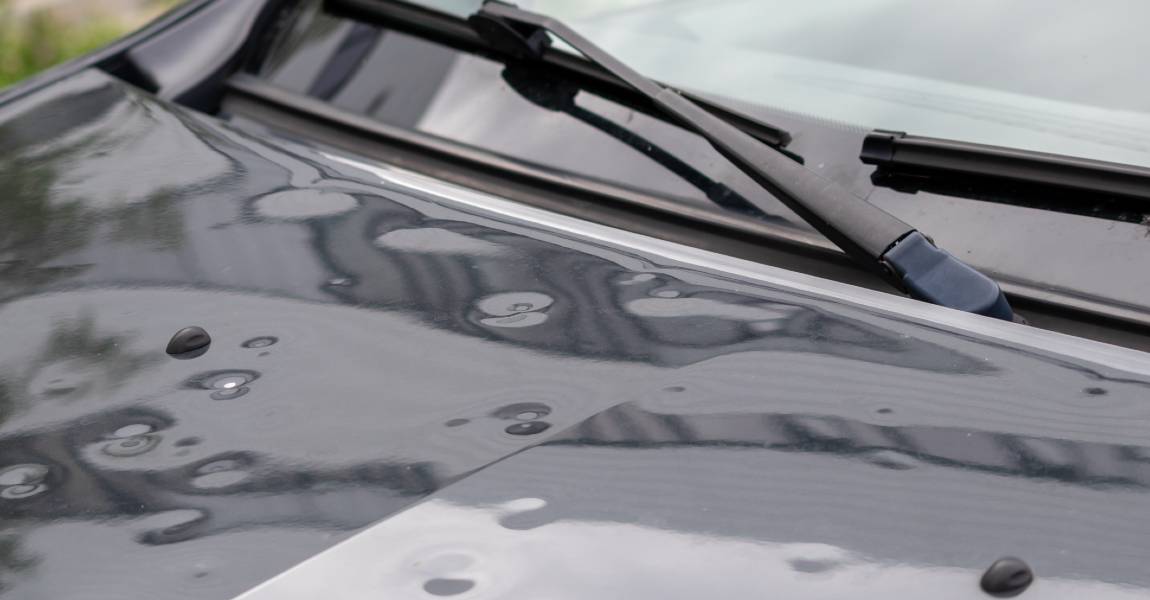
What is PDR and its Benefits for Hail Damage?
Paintless Dent Repair (PDR) removes dents from a vehicle without damaging the original factory paint job. Unlike traditional auto body repair methods, PDR involves using specialized tools to massage the dent from behind the entire panel or using glue-pulling systems to remove the dent from the outside. This process is highly effective for repairing minor and severe damages, such as hail dents, shopping cart dings, and even deeper dents caused by a minor accidents.
Benefits of PDR for Auto Hail Damage Repair
PDR is a preferred method for auto hail damage repair as it offers numerous unique advantages over traditional auto body repair methods. One significant benefit is its faster repair time. PDR usually takes less time to complete than conventional dent repair techniques, which require sanding, body filling, and painting.
PDR is an eco-friendly way to fix hail damage without harmful chemicals.
Additionally, PDR is often less costly than conventional dent repairs, and the resulting repair is usually better in terms of its quality and finish. The results of the PDR process.
Top 5 Paintless Dent Repair Techniques for Hail Damage
Hail damage to a vehicle can be stressful and costly to repair, especially if the damage is severe. PDR can provide an effective and cost-efficient solution to hail damage. PDR is a method of repairing dents without the need for traditional auto body repair techniques, meaning no harmful chemicals and no need for repainting.
Here are the top 5 paintless dent repair techniques for hail damage:
- Pushing and Massaging – This technique involves massaging the dent from behind with specialized tools until it returns to its original shape.
- Glue Pulling – A specialized glue is applied to a tab that is then attached to the dent and pulled until the dent pops back into place.
- Heat Shrinking – In cases where the metal is stretched, heat can be applied to shrink the metal back to its original shape.
- Blending – This technique involves blending the dent with the surrounding panel, effectively making it disappear.
- Tapping – A paintless dent repair technique can also reduce the amount of time that a car is out of commission, as the repairs can be done on-site and in a timely manner, getting the owner back on the road sooner.
Technique 1: Pushing from the Back
When it comes to paintless dent repair for hail damage, different techniques can be employed to effectively remove dents without the need for costly and time-consuming traditional auto body repair. One of the most common techniques used by dent repair professionals is known as Pushing from the Back.
Pushing from the Back Technique and How it’s Used for Hail Damage
The Pushing from the Back technique involves accessing the back or underside of the dent and using special tools to push it back into its original position. This is done by carefully massaging the metal back into shape without damaging the original factory paint. The dent is gradually pushed out from the back until it is completely gone. The technique is particularly effective for minor to moderate dents caused by hail damage and is preferred by many people because it is a quick and friendly option that doesn’t require the use of harmful chemicals or the application of a fresh coat of paint.
The Benefits and Limitations of this Technique
This technique is ideal for minor dents caused by hail and other small objects like shopping carts and door dings. The benefits of this technique include no use of harmful chemicals or mismatched paint and shorter repair time. Although this technique is not applicable for deep dents and severe damages, research has shown that it effectively restores 80% of hail dents.
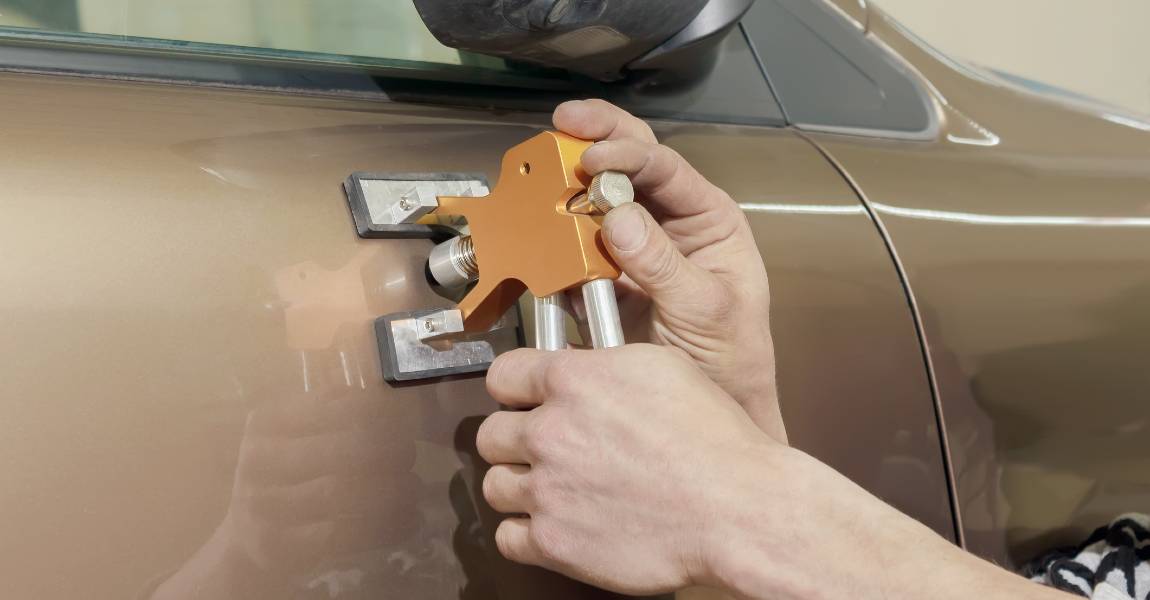
Technique 2: Glue Pulling
When it comes to fixing hail damage to vehicles, PDR techniques have become increasingly popular over the years. One of the top PDR methods used by professionals is called Glue Pulling.
Glue Pulling and How it is Used to fix Hail Damage
The process of glue pulling for auto hail damage repair involves using a heat gun to warm up the metal surface. Once the surface is heated, the glue is applied to the tab and immediately placed onto the dent. The glue takes a few seconds to harden. Once the glue has hardened, a specialized tool is attached to the tab, and the dent is pulled out by applying pressure from behind. It is essential to use the right amount of glue and the proper size of the tab to match the dent size.
Small dents typically need smaller tabs, while larger dents require larger tabs.
Glue pulling is typically used for smaller and more shallow dents, as deeper dents often require a more extensive repair process.
The Benefits of PDR for Hail Damage Repair
PDR is preferred for hail damage repair due to its benefits. It is faster, taking only a few hours than several days for traditional repairs. PDR involves less prep work, sanding, and painting.
PDR is also more environmentally friendly, requiring little to no chemicals or additional paint. Lastly, PDR is less expensive than traditional auto body repair, saving up to 70% in costs. PDR is an efficient and cost-effective method for repairing minor dents and hail damage on vehicles, with eco-friendly features and exceptional repair results.
The glue-pulling technique is limited in its effectiveness and can only be used on certain types of dents. It may not work well on dents near the edge of a panel or with sharp creases and require skill and experience to perform effectively. Other methods may be necessary for more complex professional repairs.
Technique 3: Heat Shrinking
PDR heat shrinking is a technique used in the paintless dent repair processes to remove dents from vehicles without causing any damage to the paint surface. This technique involves using a special heat gun to apply heat to the dented area, which causes the metal to expand and then contract as it cools. This process helps to remove the dent and restore the metal to its original shape. PDR heat shrinking is a popular technique because it is less invasive than traditional dent repair methods, which can involve sanding, filling, and repainting the damaged area.
PDR heat shrinking is also a cost-effective and efficient way to remove dents from vehicles, making it a popular choice among car owners and skilled technicians.
What are the Benefits and Limitations of this Technique?
This technique has certain limitations. For instance, it only works on minor dents and is unsuitable for severe damage.
Additionally, while the technique restores the panel’s original curvature, it might not perfectly match the surrounding panels’ curvature.
Therefore, it might result in a slightly visible dent, albeit much less noticeable than traditional methods.
Furthermore, this technique works well on thin metal, but it might not work as effectively for thicker metal panels. PDR Heat Shrinking is a suitable method for repairing small dents and a cost-effective alternative to traditional methods.
Technique 4: Blending
Blending is a paintless dent removal technique used to fixlarger dents and hail damage on the vehicle’s surface. This delicate technique requires a highly skilled technician as it involves reshaping and smoothing the dented area by blending it with the surrounding undamaged paint.
Blending and How it is Used to Repair Hail Damage
Blending is done by heating the damaged area and gently massaging the dent with specialized tools. The goal is to manipulate and reshape the metal’s surface without cracking or distorting the paint. The repair process is meticulously performed to ensure that the damaged area matches the original factory finish and no evidence of the dent remains visible.
This technique is a cost-effective and time-efficient option for hail damage repair as it negates the need for repainting or replacing the damaged panel.
What are the Benefits and Limitations of the Blending Technique?
Blending can be an excellent way to mend hail damage, as it allows technicians to restore the original factory finish without applying a fresh coat of paint.
However, it does have some limitations. For instance, it’s only effective for repairing minor dents that haven’t caused any damage to the paint.
Additionally, blending requires highly specialized tools and expertise, which means that it can be more costly than traditional auto body repair. Blending remains a popular choice for those looking to mend minor hail damage.
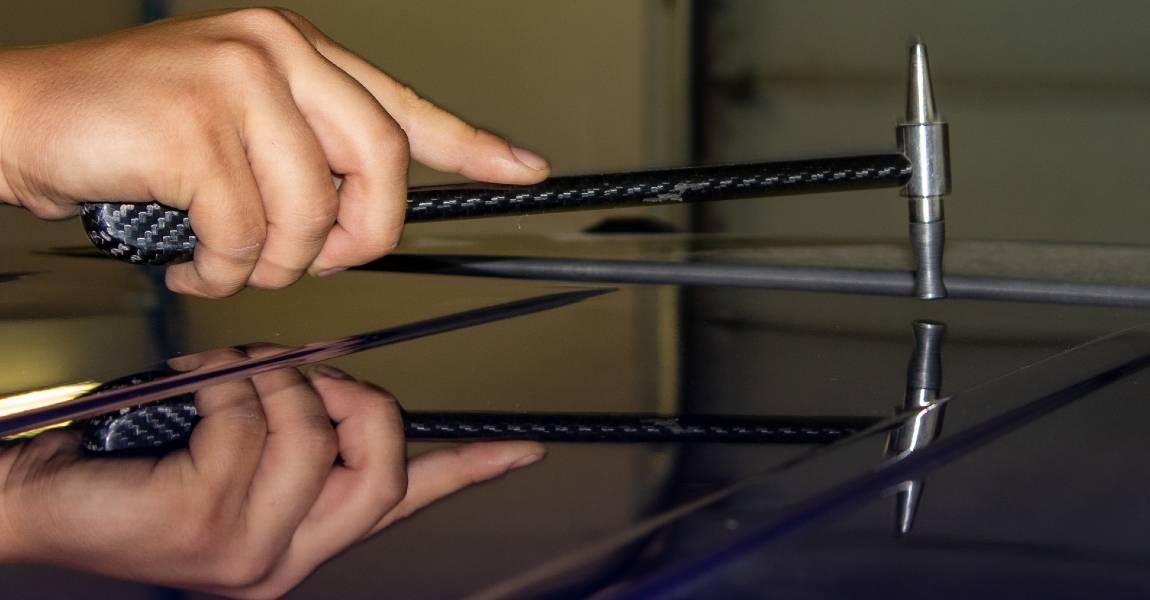
Technique 5: Tapping
One of the top paintless dent repair techniques for hail damage is tapping, also known as paintless dent removal. This technique involves using a specialized tool to tap out dents from the back of the panel gently. Tapping is particularly useful for deeper dents that cannot be repaired using other PDR techniques.
What are the Benefits and Limitations of the Tapping Technique?
The benefits of tapping include a faster repair time, as it does not require the use of harmful chemicals or the need for a coat of paint.
Additionally, tapping preserves the original factory paint, making it a cost-effective and eco-friendly option for hail damage.
However, it is important to note that tapping has limitations and cannot be used for severe damages that requires traditional auto body repair.
If you are considering tapping for your hail damage repair, it is recommended to seek a professional dent repair company for an accurate evaluation of repair costs and possible options.
Choosing the Right PDR Technique for Hail Damage
When it comes to repairing hail damage; it’s important to choose the right PDR technique based on the severity of the damage.
Here are some key factors to consider when selecting a technique:
Severity of Damage
The severity of the hail damage will dictate the PDR technique needed. For minor dents caused by small hailstones, the glue-pulling or tapping technique may be sufficient. However, larger and deeper dents, the traditional PDR method – using specialized tools to push the dent out from the backside – may be necessary.
Location of Dent
The location of the dent also plays a part in selecting a PDR technique. For dents located in harder-to-reach areas, such as quarter panels or near window guards, the traditional method may be more effective. However, for damage visible on the panel’s surface, the tapping technique or glue-pulling method may work better.
Original Factory Paint
Preserving the original factory paint is one of the key benefits of PDR. With traditional auto body repair, the entire panel must be repainted, which can be time-consuming and costly. When the original paint is left intact; the repair process is not only quicker but also provides a higher-quality finish.
Cost of Repair
PDR is often a more cost-effective option than traditional auto body repair for hail damage. The tapping and glue-pulling methods are a more budget-friendly option for minor dents, but the traditional PDR method may be cost-effective for deeper dents since it maintains the vehicle’s value. Weighing the repair cost against the damage’s severity can help determine which PDR technique is the best option.
Professional Repairs
Choosing a reputable and experienced auto dent repair shop is essential for professional hail damage repairs. An experienced technician can perform PDR on any make and model vehicle and restore it to its original factory finish without needing costly conventional repairs. Before choosing a dent repair company, consider their experience, customer reviews, and their willingness to work with your insurance provider.
Insurance Claim
Hail damage repair costs can be covered by car insurance, but it’s important to understand the claim process before beginning any repairs. Choosing a PDR technique that is covered under your insurance policy can help reduce out-of-pocket expenses. Working with an insurance company can also help ensure that the repair process is handled professionally and in a timely manner.
Rental Vehicle
While hail damage repairs are being done on a vehicle, it may be necessary to rent a vehicle. Many insurance policies will cover the cost of a rental car while your vehicle is being repaired. Selecting a PDR technique quicker than a traditional repair method can minimize the time your vehicle will be in the shop, reducing the need for a rental vehicle.
Eco-Friendly Option
Paintless dent repair is also an eco-friendly option. Unlike traditional auto body repair, PDR does not require using harmful chemicals or applying a new coat of paint. This eco-friendly option saves money and helps reduce the negative impact of auto repairs on the environment.
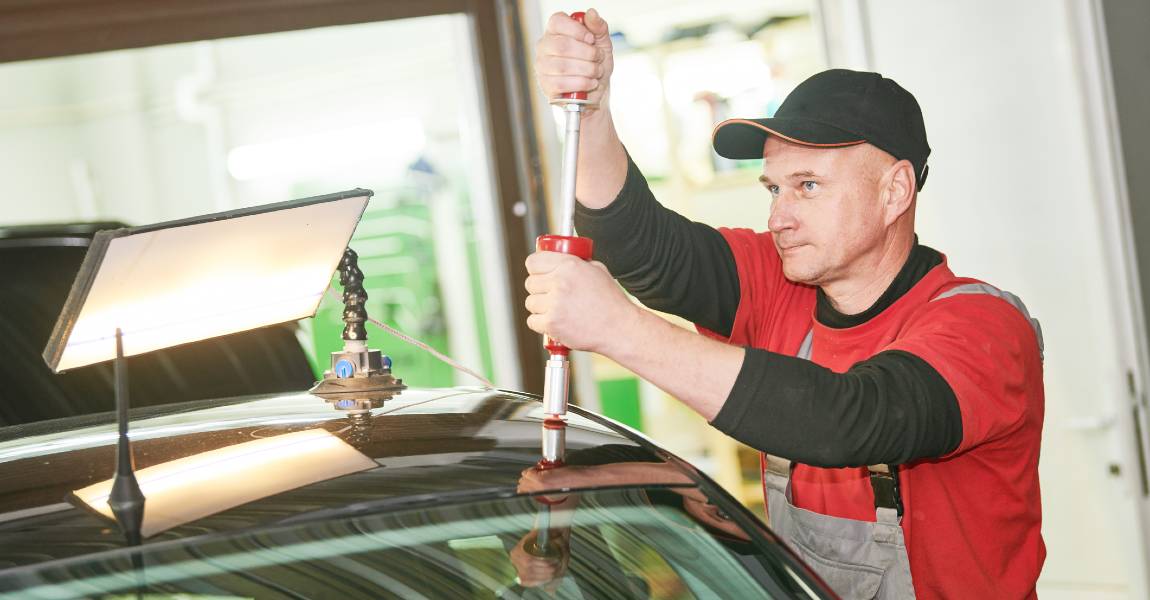
How to Find a Reputable PDR Technician for Your Hail Damage Auto Repair Needs
Choosing the right PDR technician is crucial for repairing your hail-damaged car.
The first step towards finding a reputable PDR technician is to look for someone who is experienced in dealing with the hail damage repair needs of your specific car.
An experienced technician will have an instant understanding of the damage, the vehicles which have been damaged after reaching the location, and the complexity of the underlying issues.
- You should also look for a licensed and insured PDR technician when choosing. This will help guarantee your vehicle’s safety and security during the repair process.
- Special tools and techniques for PDR are also key considerations. Technicians with access to special tools and techniques will get the job done without causing additional damage to your car.
- Transparency is also a key factor to consider. Look for a technician who is clear about the repair process, costs, and timeline, so you know exactly what to expect.
- Reading reviews and recommendations can aid in locating dependable technicians within your locality.
- Make sure you consider repair costs and insurance options to avoid costly mistakes.
Conclusion
In conclusion, paintless dent repair techniques have revolutionized how we repair vehicle hail damage. The top 5 techniques mentioned in this article, including glue Pulling, push-to-paint, blending, heat shrinking, and tapping are effective and efficient ways to restore a vehicle’s exterior without needing costly and time-consuming traditional methods.
By relying on these innovative techniques, car owners can get their vehicles back on the road quickly and with minimal disruption to their daily lives. Whether you’re a professional auto body technician or a DIY enthusiast, mastering these techniques will undoubtedly prove invaluable in your quest to keep your vehicle looking its best.
Keep coming back to ProTech Auto Shield for more guides and news in the world of automobile detailing. Or contact ProTech Auto Shield for more information at 303.423.2841.
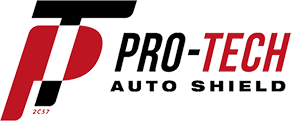




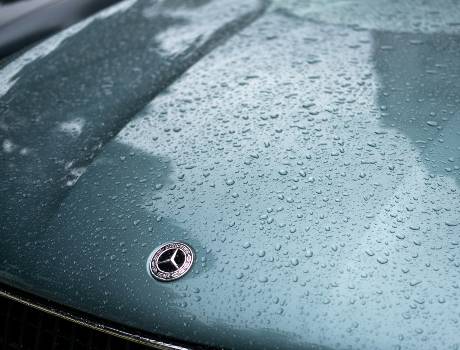
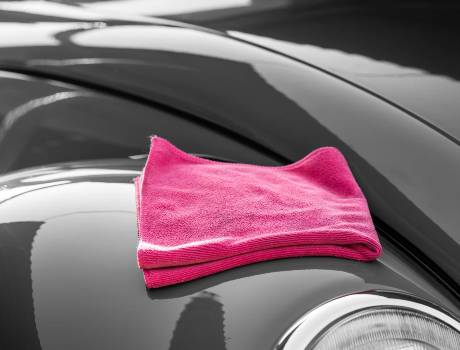

WHAT OUR CLIENTS ARE SAYING